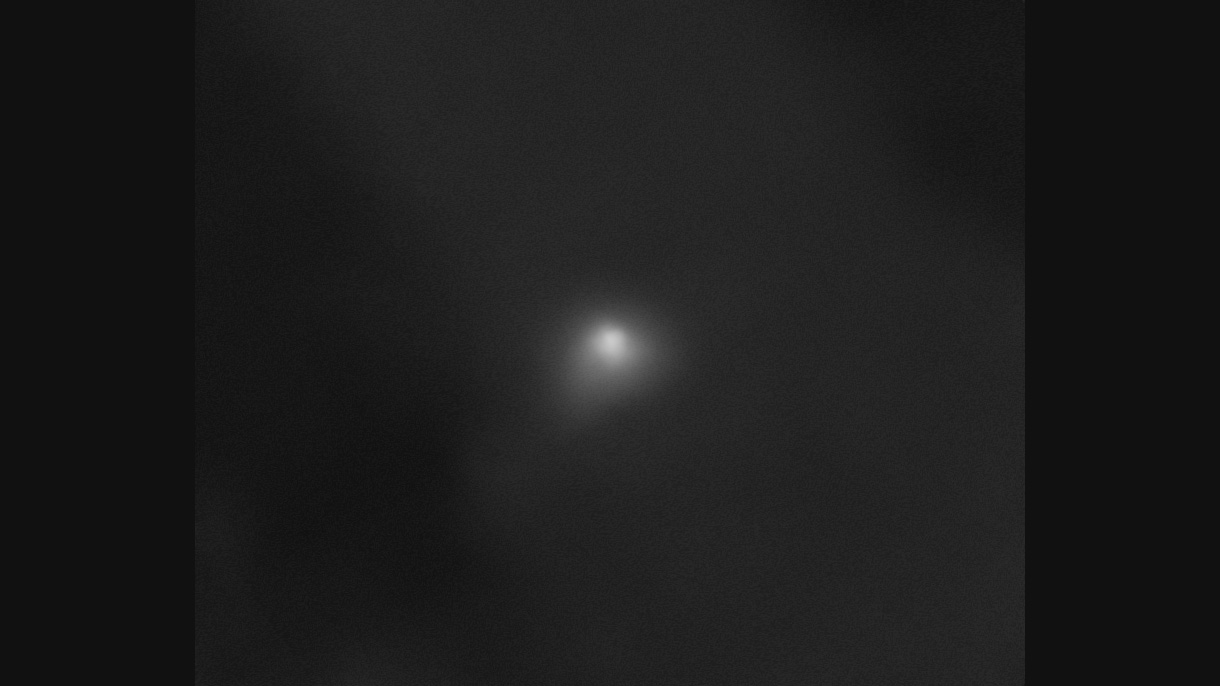More than 616,400 signatures sent to NASA from citizens in 81 countries have been recorded on a high-tech data disk that will be installed Friday on the Cassini spacecraft at NASA's Kennedy Space Center in Florida, where the spacecraft is being prepared for an Oct. 6 launch on a international scientific mission to the planet Saturn.
The installation of the Cassini mission's "signature disk" on the spacecraft marks the end of a 1-1/2-year volunteer-led effort to sort, scan and record the hundreds of thousands of signatures from postcards and letters sent to board the Saturn- bound spacecraft from around the world.
"The signature disk idea began as a very small in-house effort to let Cassini team members place their signatures somewhere on the spacecraft they had helped build, then we realized we could accommodate many more signatures and opened it up to everyone," said Richard J. Spehalski, program manager of the Cassini mission at NASA's Jet Propulsion Laboratory in Pasadena, CA. "It has blossomed into a 'message in a bottle' to Saturn from hundreds of thousands of people on Earth. We have been overwhelmed by the response." Soon after the effort was announced in November 1995, cards began arriving from around the globe with as many as 35,000 signatures received during peak weeks.
"We received signatures from individuals young and old, from whole families, hundreds of classes of students and whole schools," said Charley Kohlhase, Cassini's science and mission design manager, who oversaw the signature disk development. He said at least one submission was received from a descendant of the 17th century Italian-French astronomer, Jean-Dominique Cassini, for whom the mission is named. Some even sent in paw prints of their pets.
The two-story-tall spacecraft, scheduled for launch on an Air Force Titan IV/Centaur launch vehicle on Oct. 6, is destined to arrive at Saturn in July 2004, where it will orbit and study Saturn, its rings, moons and magnetic environment in detail over a four-year period. Cassini carries a scientific probe called Huygens, provided by the European Space Agency. Huygens will be released from the main Cassini spacecraft and parachute through the atmosphere of Saturn's most intriguing moon, Titan, which is thought to chemically resemble a very cold version of Earth's environment before life began.
Cassini is an international mission conducted by NASA, the European Space Agency and the Italian space agency. The Cassini spacecraft carries 18 scientific instruments provided by scientists from Europe and the U.S. The mission is similar in scope to the Galileo mission , which sent a spacecraft to orbit Jupiter and sent a probe to parachute into the atmosphere of the giant planet.
"There are many different reasons for this outpouring of signatures," said Kohlhase. "Each of our signatures is as unique as our fingerprints. Some of us dream of venturing into the cosmos. Sending our signatures can substitute for making the journey ourselves."
Kohlhase said many of the submissions sent in were touching, including one from a parent who sent the signatures of his deceased 15-year-old daughter. Many signatures were received along with poems, messages, original artwork and music, but only the signatures were stored on the disk.
The disk includes the signatures of the two 17th century astronomers for whom the Saturn orbiter and Titan probe are named. Jean Dominique Cassini's signature was recorded from a letter dated in 1690. Dutch scientist Christiaan Huygens' signature was copied from a letter he sent to Cassini in 1684. From November 1995 until January 1 this year, every signature submission received by the Cassini office was electronically scanned and recorded on data tapes by volunteers working at the Planetary Society's headquarters in Pasadena, CA.
For the final product, Kohlhase chose the recently developed digital versatile disk (DVD) format, which can hold up to 25 times more information than a conventional CD-ROM. The collected signatures were recorded onto the DVD in May 1997 at the Imation Co. in Menomonie, WI. Ten copies were made: one for the spacecraft and the remainder for future display at museums around the world.
The artwork covering the disk was designed by Kohlhase to celebrate various elements of the Cassini mission, its scientific targets, and the flags of those countries with the greatest number of signatures sent to the program. (The largest number was collected from the U.S., with a total of 542,020 from all 50 states.) Six Golden Eagle wing feathers are shown, symbolizing both the quill pen and the ability to soar above the Earth.
JPL engineers and technicians who assembled the spacecraft will place the disk into a shallow cavity between two pieces of aluminum that will protect it from micrometeoroid impacts. The package will be mounted to the side of the spacecraft beneath a pallet carrying cameras and other science instruments that will be used to study the Saturnian system. A specially designed, multicolored patch of thermal blanket material will be installed over the disk package.
Along with the spacecraft, the disk will reside in Saturn's orbit centuries after the primary mission is completed in July 2008. The Cassini mission is managed for NASA's Office of Space Science, Washington, D.C., by JPL, a division of the California Institute of Technology.
PUBLIC INFORMATION OFFICE
JET PROPULSION LABORATORY
CALIFORNIA INSTITUTE OF TECHNOLOGY
NATIONAL AERONAUTICS AND SPACE ADMINISTRATION
PASADENA, CALIF. 91109. TELEPHONE (818) 354-5011
http://www.jpl.nasa.gov
Contact: Mary Beth Murrill



































